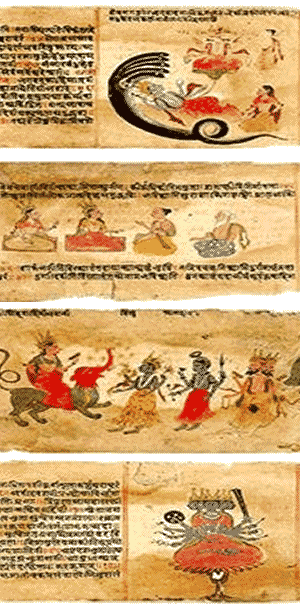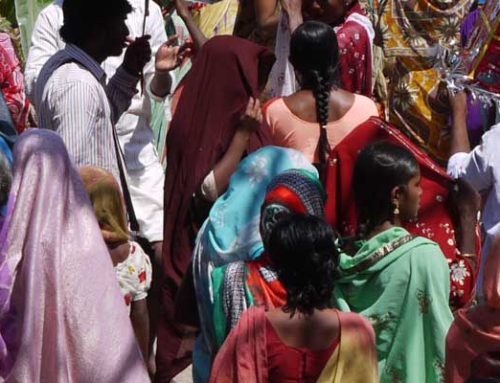The Aryans were warriors that first appeared in northern India about 1500bce. Most Aryans were nomadic cattle herders who occasionally practiced slash-and-burn agriculture. A band of Aryans would cut the trees on a plot of land to create a field. Months later, when the vegetation had dried, they set it on fire. The ashes left from the fire fertilized the soil for a few growing seasons. The Aryans would repeat the process in a new area once the soil had been exhausted. The Aryans did not remain in one place for long, so unlike the Indus River Valley culture that preceded them in the region, the Aryans did not build permanent homes.
The Aryans were skilled warriors. Their experience as cattle herders made them able horsemen. Like the Assyrians of Mesopotamia, the Aryans built chariots with spoke wheels, which were faster and easier to control than chariots with solid wheels.
Their military skills allowed bands of Aryans to subjugate the native Dravidian people and to spread their language and culture to most of the subcontinent.

Aryan_route
The Aryans Sanskrit language suggest they might have come through the tall mountains of the Hindu Kush from present-day Afghanistan.
About 1000bce, the Aryans discovered iron ore in the Ganges River Valley. The heavy monsoon rains created dense vegetation in the valley. When the Aryans cleared the trees and brush, they discovered fertile land that allowed them to farm along the banks of the Ganges permanently. Within 500 years, the several villages the Aryans had formed had grown into small states.
The Aryans spoke Sanskrit, a language similar to many European languages but unlike the Dravidian languages spoken in India before the Aryan invasion. The similarities with European languages suggest that Aryans came through the tall mountains of the Hindu Kush from present-day Afghanistan. However, we cannot be sure because there are no stories of a great journey to be found in the songs and poems of the Aryan people.
The first Aryans on the subcontinent could not read or write, but they did have a rich oral tradition. For hundreds of years, Aryan songs and epic poems were handed down by word of mouth.

The_Vedas
The Vedas are an assemblage of mantras (hymns). The four sections of the Vedas are the Samhitas, the Brahmanas, the Aranyakas, and the Upanishads.
About 500BCE, the Aryans began to compose a body of texts called Vedas based on their traditional stories. Veda is a Sanskrit word that means knowledge. The Rig Veda is a collection of over 1000 poems that still survive. The influence of these stories of the Aryan people on the subcontinent is why historians label the period of Indian history lasting from about 1500BCE to 322BCE as the Vedic Age.
Resources
Download this lesson as Microsoft Word file or as an Adobe Acrobat file.
View a Powerpoint presentation of this lesson.
Listen as Mr. Dowling reads this lesson.
Lexile Measure 1110L
Mean Sentence Length 17.38

India_map_Indus_Ganges
Many nomadic bands of Aryans settled along the banks of the Indus River.



